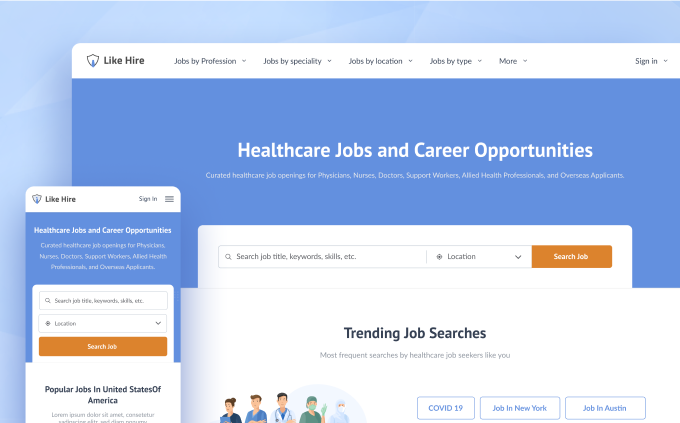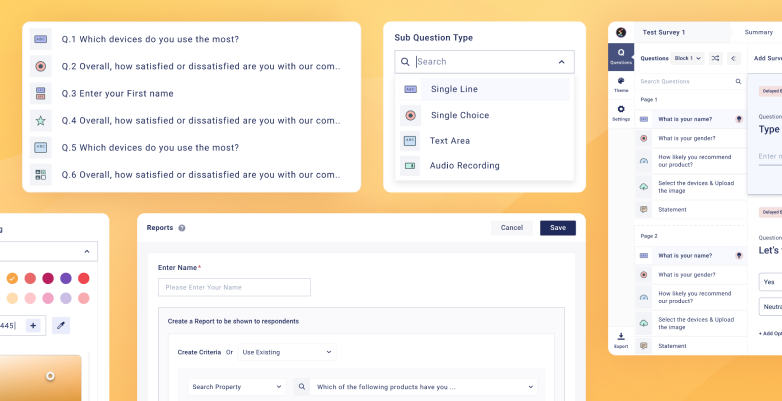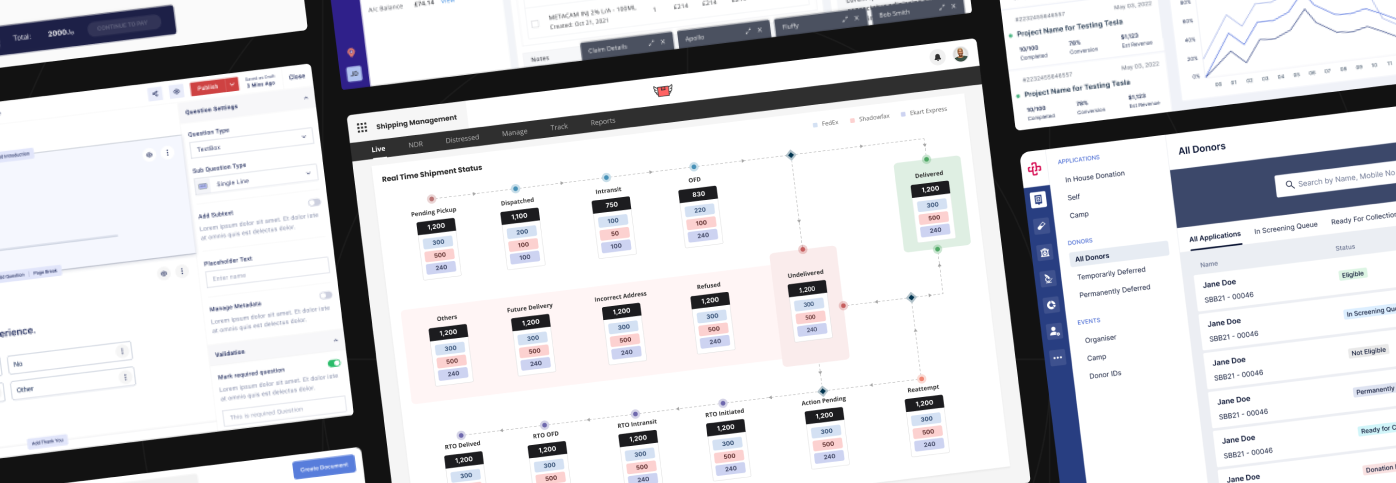What is Survivorship Bias? Consequences, Tips & Strategies
Mar 27, 2024 • Reading Time 9 Mins • Insights• By Aakash Jethwani

In UX design, a tricky, unnoticed force guides our choices. That’s survivorship bias.
We often look at what worked (successful users or products) and ignore what didn’t. This oversight skews our views and design choices, affecting the quality of our UX plans.
This survivorship bias is a real pitfall in UX design. It’s when designers build insights on the feedback of users who had a good time, ignoring those who had a rough go or stopped using the product.
In doing this, we overlook important information. We need this information to make designs that are more welcoming and effective.
In this blog, we will discuss what is survivorship bias in UX design, its effect on our work and how this can lead to exhaustive, user-focused design solutions.
For UX designers, product managers and everyone tasked with creating user experiences, getting a handle on survivorship bias is critical to craft top-notch, inclusive products.
The Concept of Survivorship Bias
Survivorship bias traces back to Abraham Wald, a military statistician who had a special job during World War II.
He had to figure out the best way to armour planes. He saw that planes coming back from battle often had a lot of damage in some spots.
The first thought was to make those spots stronger. But Wald had a new idea. He said the spots without damage were the ones at risk. Why? Because planes hit there didn’t come back.
This is the heart of survivorship bias – when we only look at the things that survive or succeed and forget about those that don’t.
Now, let’s talk tech and design, particularly Survivorship bias in UX (User Experience).
As stated above, it happens when designers only look at data from successful user actions. They forget about users who gave up on the product or didn’t like it.
Imagine an app that only looks at data from users who bought something, but not from users who left their carts. This can give a wrong idea of success.
It can slow down the growth of a product that could serve more users, like those who don’t like the current design.
Survivorship bias isn’t just in technology. It’s in many fields, leading to decisions that miss the full picture.
Check out this video for a better understanding of the Survivorship Bias Concept.

Ready to design with a broader perspective?
Contact UsSurvivorship Bias in UX Design
In UX design, survivorship bias can sneak up. Yet its impact can be significant.
Imagine a team making a mobile app. They only listen to users that stick around. But forget about folks who deleted the app fast.
And in online shopping? Survivorship bias hits if feedback only comes from loyal customers. This leaves out folks who didn’t shop again and why.
Another case? Website redesigns. Here decisions are based on the behavior of users who navigate the site successfully, disregarding the experiences of those who couldn’t find what they were looking for and left the site.
The Consequences of Ignoring Survivorship Bias
Ignoring survivorship bias in UX design can lead to a range of detrimental outcomes that affect not only the product’s immediate success but also its long-term viability and innovation.
A detailed analysis reveals several key risks and pitfalls.
1. Misguided Design Choices:
If we ignore survivorship bias, we might make wrong decisions. We rely on limited or bent facts.
This might create parts that don’t hit the mark with most people or don’t solve important user problems, creating a product that could be easier to use.
2. Reduced User Satisfaction:
Products made with survivorship bias often only work for a small group of people who are okay with how things are.
This can upset new or struggling users, who might find it hard to use the product or feel it doesn’t meet what they need.
3. Compromised Product Functionality:
If you only focus on what works well, you might miss out on features that many users may need.
Thus survivorship can leave your product lacking in key areas. It will only be useful for a small number of people.
4. Bad Business Results:
If a product doesn’t care for all user needs, people may not stick with it. This leads to less use, people quitting, and a loss in the industry competition.
Ignoring survivorship bias can cut user activity, increase quit rates, and bring down profits.
5. Stifled Innovation & Design Evolution:
Not considering all user experiences over time can limit growth and new ideas. Making design choices based on the success of a smaller user group can hinder solution-finding and new ways of thinking that could help many.
It slows product growth and stops it from reaching top design and features.
Read more on: Impact of Survivorship Bias on UX Design
Identifying Survivorship Bias in UX Research
Spotting survivorship bias in UX research is key. It helps us better understand good and bad user experiences.
To spot the survivorship bias, we use different techniques. These help us see past the most obvious data.
1. Using Different Data Sources:
To spot survivorship bias, try using different data sources. Don’t just use number-based data like analytics and metrics.
Add insights from talking to users, surveys or usability tests. It’s good to include thoughts from users who didn’t like their experience or quit using the product.
2. Analyzing Drop-off Points:
Looking at where and when people quit or stop using something unearths precious clues.
High quit rates in certain parts of a webpage or an app might signal hidden problems ignored while just centered on successful experiences.
3. Segmented User Feedback:
Gathering and examining comments from various user groups, including frequent and rare users, can reveal survivor bias.
It involves exploring the experiences of first-time users, users who use the service less often, and those who have completely quit using the product or service.
4. Importance of Considering Diverse User Experiences & Failed Interactions:
Don’t ignore any user feedback, whether it’s successful or not. It offers valuable information.
Studying the unique and less fruitful experiences helps us improve a product for more people.
5. Longitudinal Studies for Trend Analysis:
By studying user behaviour and comments continuously, we can spot patterns.
This can’t be seen with short-term studies. This way, we can see how user needs change and how to modify our products to match.

Transform your UX mindset
Contact UsTips for Gathering Comprehensive Data
- Talk to customers who stop using a product or delete it. Ask them why.
- Look at support requests and complaints. Spot problems that many people have.
- Use tools such as heat maps. See how customers use different parts of a product.
- Ask for clear feedback in many ways. Make sure customers know we care about good and bad experiences equally.
Strategies to Mitigate Survivorship Bias
To lessen survivorship bias, a broad method is needed. This method must not just reflect on successful users, but also gain insights from all users.
Negative user experiences play a crucial part in creating a fair design. Here’s how you can fight survivorship bias:
1. Deepen User Research
First, widen your research. It should include all users, not just those who are successful or outspoken, but also the slighted users.
2. Change Up Feedback Channels:
Allow various feedback outlets. Ways to do this include surveys, interviews, social media, and observing users. You’ll gather many different users’ experiences this way.
3. Embrace Negative Feedback:
Actively listen to and give weight to negative remarks and complaints. They’re golden for spotting problems; you can’t see these from solely positive feedback.
4. Look at User Drop-offs:
See where and why users leave or quit. Knowing these issues gives key info on what to fix.
5. Make User Personas for All:
Make personas that mirror all users, even those who find parts of the product hard.
6. Test and Tweak Design:
Use a design method that tests and edits based on all user feedback. Each change should fix problems noted in the last cycle.
7. Do Regular Check-ups:
Always look at user opinions and product data to spot any rising trends or problems that might need care.
Incorporating a Broad Range of User Feedback
1. Balancing Quantitative with Qualitative Data:
Pair number data (like clicks and views counts) with people talk (collected from user chats and questionnaires) for a full picture.
2. Encouraging Open Feedback:
Make a place where folks aren’t shy to share real feedback, even if it’s bad.
3. Utilizing User Testing Sessions:
Set up trial sessions with users of different backgrounds, especially those who are new to the product.
4. Leveraging Social Listening:
Listen to what users are saying online about the product. You might unearth raw opinions and experiences.
By adopting these strategies, designers and product teams can create UX designs that are more representative of the entire user base, thus mitigating the effects of survivorship bias.
This inclusive approach leads to products that are not only successful among a few but are genuinely user-centric and cater to a broader audience.
Conclusion
To conclude Survivorship Bias highlights the critical importance of recognizing and addressing biases in UX design. It’s about creating better products by listening to all users, not just successful ones.
If you’re a professional dealing with this, our UI UX Designer‘s approach can help you. Our UX design is all about hearing everyone. This makes sure your product isn’t only good-looking, but also works for everybody. A wide view like this helps create real-world success in design.
You may also like to read our blog on:
Best Minimalist Website Design Examples
Top 10 Mobile Navigation Design Examples
10 Best Dashboard Designs to Watch in 2024

Optimize your user journey now!
Contact UsSubscribe to
blogs
Related Blogs
Benefits of UI UX Design: How it Transforms User Experience
Reading Time: 9 minutes In the dynamic world of digital interactions, UI/UX design stands as the backbone of creating meaningful and seamless experiences for users. Whether you’re a seasoned designer or just stepping into the realm of UI/UX, understanding the advantages of UI/UX Design and benefits of user experience design can significantly impact your approach to crafting interfaces that […]
Dec 28, 2023 • Reading Time 13 Mins • By Aakash Jethwani

Essential UI UX Design Tips for Outstanding UX Experiences
Reading Time: 9 minutes In the rapidly changing digital landscape, UI/UX Design holds unparalleled importance. Its significance lies in crafting experiences that resonate with users, ensuring their satisfaction and loyalty. A meticulously designed UI/UX becomes a secret weapon in the competitive tech space, setting a product apart from the crowd. Beyond aesthetics, it plays a pivotal role in increasing […]
Dec 27, 2023 • Reading Time 13 Mins • By Aakash Jethwani









